LA SALSA PICANTE DE WAYNE GORBEA
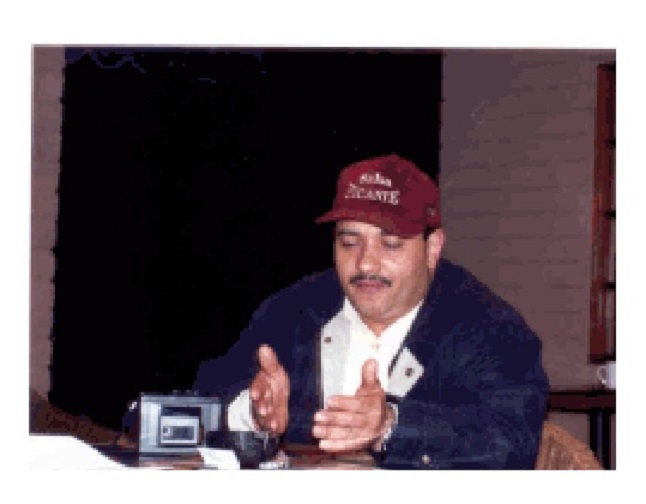
Interview originally published 2001
Revised 2017
Photography by Bruce Brewer
The seventies are known as the period of the "boom" in salsa music, in which the Fania label and its artists ruled like nobody else. However, one fellow and his band —Wayne Gorbea and Conjunto Salsa —, found a niche for themselves and were able to be successful with all that heavy competition. I remember getting a copy of their second album, "La Salsa del Conjunto Salsa con Wayne Gorbea," in 1979. The tune "Los Rumberos" has been resonating in my mind ever since. With his new label, Shanachie, Wayne has released two albums and currently has one of the best bands of the nineties. In fact, he is one of the hottest groups in New York City right now.
I was able to talk with Wayne Gorbea a couple of hours before his successful presentation in the Sportsman’s Lodge at Studio City, California. He was here due to the effort of the "Promoter of Promoters," Albert Torres. We were joined by Juan Rodriguez, who’s the bongo player of the band, and also provided some good comments for this interview. Wayne was tired because of his trip, but was willing to share some stories from the battlefield. Needless to say, his show was a success and he is headed back to the City of the Angels sometime in the near future.
ERIC E. GONZALEZ (EEG): Okay, Wayne, for the folks who don’t know you from your glorious past, please give us a little background about yourself and your band.
WAYNE GORBEA (WG): I never played in any band. I always had my own groups. From the "Latin Swingers" to "Orchestra Cuda," "La Nueva Comparsa," "Conjunto Salsa," and "Salsa Picante."
EEG: I read somewhere that you taught yourself to play the piano.
WG: Well, I had a teacher. He was panamanian; his name was Nicolás Rodríguez. He taught many of the pianists in New York: Oscar Hernández, Hilton Ruiz...Other musicians would go to him for various types of study, like Nelson González, who would go to him to study music in general, composition. Joe Mannozzi, the piano and trumpet player for Típica ‘73, was there before I would get there.
EEG: What year are we talking about?
WG: ‘72, ‘73? But I also took piano in Korea. The Orchestra Cuda was like a Santana-type thing, with a female singer, a guitar, and all that other good stuff. But I was playing congas at that time. Willie Rodríguez (from Manny Oquendo’s Libre) was playing piano; that’s when he first started. The "Latin Swingers" was in ‘65 - ‘66.
EEG: So you did your first recording in 1973.
WG: No, ‘71.
EEG: That was "Salsa Boricua"?
WG: Right, with Spanish Music Center Label (SMC). Gabriel Oller was the founder of SMC, and was also the first Spanish to have a Spanish/Hispanic store in 110th St.
EEG: Was "Salsa Boricua" successful?
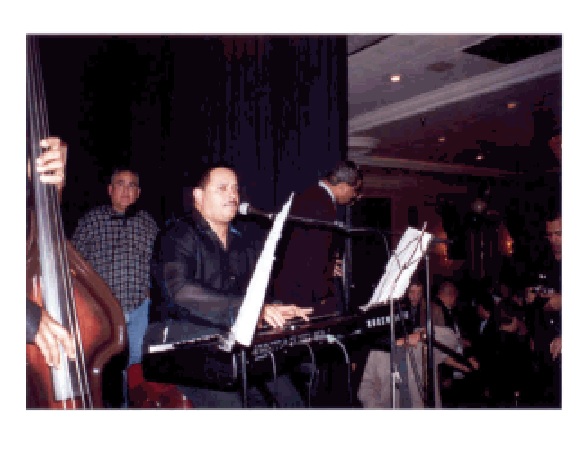 WG:
No, but it
opened the doors, because I started working in "El Corso," "Casa
Blanca," and all the clubs that were happening during that period. I
worked a lot! It even didn’t have a plastic cover! Gabriel used to do
his projects, and he didn’t even give a cover. But I said, "I want at
least a cover!" So he made the cover, and then I would take those
cellophane wraps...(LAUGH). But it did well for me. It opened doors and
we were working.
WG:
No, but it
opened the doors, because I started working in "El Corso," "Casa
Blanca," and all the clubs that were happening during that period. I
worked a lot! It even didn’t have a plastic cover! Gabriel used to do
his projects, and he didn’t even give a cover. But I said, "I want at
least a cover!" So he made the cover, and then I would take those
cellophane wraps...(LAUGH). But it did well for me. It opened doors and
we were working.
EEG: Then you did what I believe was your best record those years: "La Salsa del Conjunto Salsa con Wayne Gorbea". It has the classic "Los Rumberos." How did this record do in comparison with the previous one?
WG: "Los Rumberos" moved up to number 3 in the charts. They had the monopoly going (Fania?) and what have you, but still I was able to get into the "in-crowd" and everything was going good.
EEG: Speaking of monopolies, How did you survive Latin New York during the seventies, when Fania was the powerhouse?
WG: I was working, that’s all I cared. This world is big enough. I had a ball, working seven days a week. I was the after hours king. They would call me at the last minute if they needed a band. So I formed a "Vénte tú" ("Come with me"). There were so many clubs, that you could find work.
EEG: How do you compare the club scene in New York now versus the good ol’days?
WG: Fatal! Fatal, because after the incidents of the "Happyland" fire, and a couple more, the laws started to get more stricter. No exits or nothing like that, they closed you down right away. Then they started going with the cabaret licenses and all of that. They cracked down pretty heavy.
EEG: What years are we talking about?
WG: We are talking
about mid seventies.
EEG: Your first recordings were done with an unusual format: two trombones and one trumpet. What was the reason for this?
WG: Well, I was always interested in Eddie Palmieri’s sound -- La Perfecta.
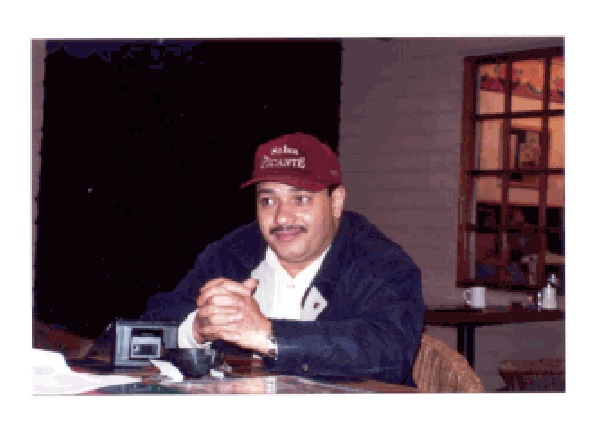 EEG:
Okay, lets talk
about that. Who else influenced you?
EEG:
Okay, lets talk
about that. Who else influenced you?
WG: Charlie Palmieri, who got me hooked up with Nick Rodríguez. Ricardo Ray. Then I started to listen to the Cuban sounds, you know —Peruchín, Lili Martínez, Rubén González, and quite a few others. And, of course, Papo (Lucca)—one of the younger Puerto Rican statesmen, as far as piano playing is concerned. They all had their variety of styles.
I have always said that I play what I enjoy playing, and then as long as is for el bailador (dancer) and also for the musician, because, without the musician, I can’t go to a dance and enjoy it while playing. Now the music scene has changed; it became a singer’s market. You became a backup musician. You can’t tell the style of who’s playing what instrument and stuff like that. That killed the musician’s style, their approach to the music - their signatures. In the sixties, without hearing the singer, you hear the band and you knew what band it was. Those were special qualities, because people were going out to dance. Ricardo Ray, Eddie Palmieri, (Larry) Harlow, Ray Barreto, and The Lebron Brothers...They would all be in one dance.
EEG: In the next album, "La Salsa y la charanga", you switched to charanga. Why?
WG: Well, that was like going with the flow, but yet not changing totally into going into the charanga bag. Just adding the few elements that would give me that edge.
EEG: So you were just following the charanga movement in New York City at that time.
WG: Yes, yes, but still...I was sticking to my guns. Just add the elements. I had some of the musicians from down here: Johnny Polanco and Freddy Crespo. They did that particular album with me.
EEG: Did you feel successful playing charanga?
WG: Oh, yes. We had a tune, "Elena," went out to Number 2. Composed by Orlando Avilés.
EEG:
That was your
last work for the seventies. I think you only did one album in the
eighties, right?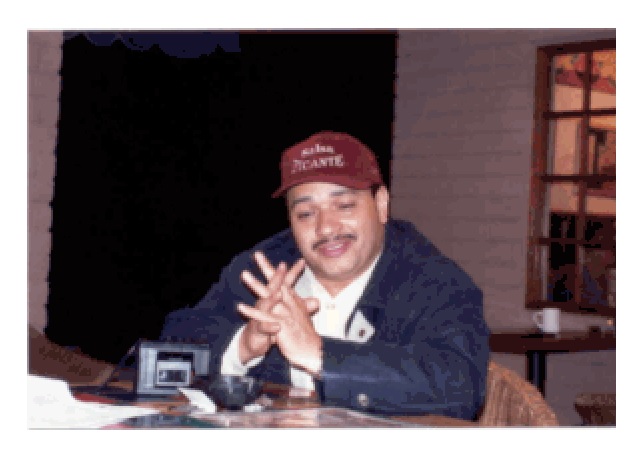
WG: Well, I did a temporary to mess with the recording industry. Everybody was throwing twelve inch 45s in the American market, so I did my twelve inch 45 in the Latin market. That was "Ariñanara" and "The night is still young" for Wayne Go records. I also did "Sigan Bailando," again for Wayne Go records. Then I sold it to the distributors - Sergio Boffill and these people from SAR records. They took it and it did very well in Colombia. To this date, if we go play to the Colombians, and we don’t play our old material, forget it. "El Condimento," on Martínez records, followed up "Sigan Bailando."
EEG: You also recorded "live" for a compilation CD called "The Montuno Sessions - Live From Studio A." You played "Tumba Palo Cucuyé."
WG: Yes, yes. They took it out from a radio program that we did for Al Angeloro.
EEG: Charlie Palmieri also participated in that project. Do you recall anything about that recording? It sounds very intense.
WG: Those sessions? They were great! It was hot, because it was summertime. They were exciting sessions, especially when we would get all-star musicians from the Bronx and New York.
EEG: Did you interact with Charlie Palmieri at all?
WG: One week, before he passed away, we were supposed to do a "live" radio broadcast from 106th street, at the center of the arts, or something like that. I was looking forward to it so much, because I was a guest, and he was a guest, and I was overwhelmed. Then I found out he passed away, so I have to do it by myself. That day I think they also had Orquesta Broadway and Chico Alvarez and his group. I performed with Chico’s group.
EEG: I read that when you made your first album, it was also really hot inside the studio...
WG: Okay. This is a good one.(LAUGHS) I just finished doing four gigs. We started at a regular block party, did a wedding reception, did a regular gig, did the after-hour, which started around four o’clock in the morning. Then, around seven or eight o’clock in the morning, we go into the studio. And it was hot! No air-conditioning. This is in Gabriel Oller’s studio. So, we took off our shirts. No shirts at all. But the band was already tight, because I was working a lot. And, in between the session—just to take a break from the heat—, he took us to eat at McDonalds (LAUGHS). So, we got back and just knocked it out. No over-dubbing, nothing like that. It was live. The band was just that tight. We did it and moved out of there.
EEG: In one day?
WG: In one day. We did eight tunes in eight hours. That’s it.
EEG: All right. In the nineties you came back with new energy, and you did "Cógele El Gusto." You kept the same format: two trombones and one trumpet. What difference do you feel in the sound that you have now compared to the seventies?
WG: Well, it’s progressive. The musicians I have now are a little more seasoned. We have a variety of musicians from different countries and what have you. But everybody studied the music. That’s the important thing—to know the idiom of the music that you are performing. The ones that were working at that time (‘70s), they would know the music, and they would always listen. Listening was the power. You listen, you learn. So, these are spontaneous musicians—especially percussionists, because I was a congero myself! It’s all about feeling. If you can’t feel, if you want to be a mechanic (musically), then be a mechanic. It is important to read. Know how to read, learn how to read, but, most of all, play from your soul and know the music.
EEG: Tell me about the other musical instruments that you play.
WG: I play violin, trumpet, and conga.
EEG: How come you switched from conga to piano?
WG: Because the piano players wouldn’t show up. There would be a problem all the time. I got tired of that.
EEG: I understand that you just came from Australia. Tell me about that experience.
WG: We were there for a whole week, and we played three days. The music is played down there, and they really enjoy the music. We played in Sydney. Right off the water they had a little stage. It was fantastic. The first night, it was about 40,000 thousand people. And the Sydney All-Stars—a group that they have—sounds pretty good, too.
EEG: I know that Europe has a good crowd, too.
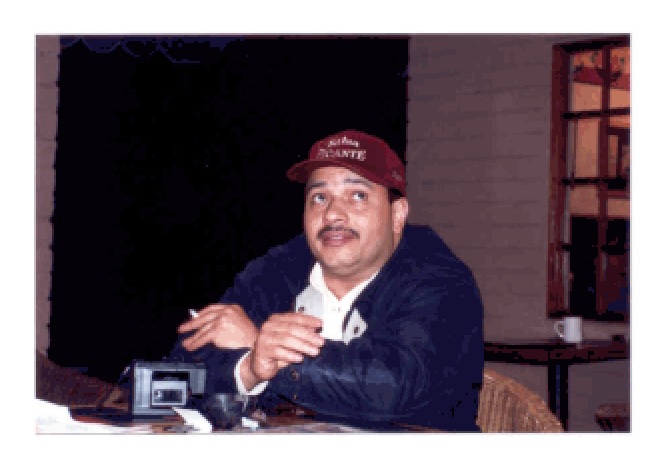
WG: Oh, man, they have dance classes all over the place. It looks like the sixties back in New York. Everybody is dancing, and enjoying the music for real. Sold-out crowds, thanks God. They want us to go again. The governor or mayor of Liverpool came up and greeted and embraced us. It was just so overwhelming that they appreciated it so much! He said, "I want you guys here next year to play the festival I got for four days." From there, our manager, Tony Morrison, will take us to Scotland, Ireland...All this people like it!
EEG: How is that you got hooked with your current label, Shanachie? Weren’t you their first salsa act?
WG: No, Ralphie (Ralph Irizarry & Timbalaye) was first, then came Johnny Almendra (Johnny Almedra & Los Jóvenes Del Barrio), and I was the last one. And I am the one that made the hit for them. But I already had my CD out two years before that, so I didn’t spend a penny in publicity (NOTE: "Cógele el Gusto" came out first under the Wayne Go label, and was reissued later under the Shanachie label). So it took off the way a recording should take off: on its merit -- al gusto de uno (to one’s own taste). That’s why it is called "Cógele el gusto. The same we play in the recording, the same way you hear it on the stage.
EEG: How did Shanachie help you?
WG: Shanachie opened up the world with their world distribution. That’s why we started touring even more, because they have their offices in other places. They give me information to follow on, because I do my own booking management. Very few people that you can trust in the business, so you have to take things into your own hands, and I have always done that.
EEG: It looks that you learned hard lessons from the seventies, eh?
WG: I learned from the fifties, from the sixties. You learn from the past. The musicians were not educated business-wise.
EEG: Tell me about your latest CD, "Saboreando." How does it differ from the previous one?
WG: It has the same elements, just changed a few musicians. Nobody in this band gets fired: they leave on their own accord, because if there in no 100% desire to be there and do the best, then the party doesn’t work. That’s why these two last projects were great — great to excellent.
EEG: Anything
you can advance about you next album? Any name yet?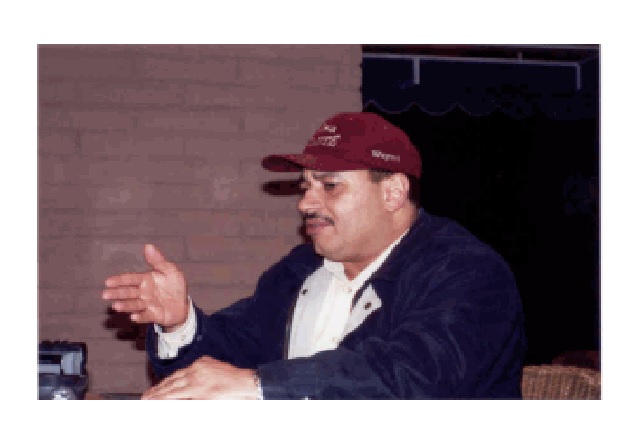
WG: It’s going to be a another killer. I never get the name beforehand. "Saboreando" came to me the day before I had to deliver the recording. In my kitchen, in the table, there was “C?gele el gusto.” We did that one analog, and the other one was digital. It was so rich, that we could taste it - saboréalo. So the next one, I’ll just wait until the material is in, hear what’s going on, and I’ll come up with something.
EEG: Is there is anything that you still want to do, musically speaking?
WG: I have maybe done four arrangements in my life. Well, in this one I’m going to try to do two arrangements. But I want to give acknowledgment to Mr. Ramon Rosado, because throughout the years he has always been like a mentor for me, making sure that I stayed in check with the music. He’s on a roll now for his compositions. "Cógele el Gusto" is one of the compositions. "Creo en mí," "Nelida," "Son Picante,""Yolanda," you know, he’s on a roll. But he has a flavor for the band. He knows the band; he knows the musicians. We have known (each other) and been together for quite a few years -- fifteen or twenty years, or even more.
EEG: I have seen you performing with Manny Oquendo and Libre. How come you are not a permanent member of that band?
WG: Well, let’s say I wasn’t to be a part of that band, because it wasn’t my desire.
EEG: How do you see the future of our music?
WG: ¡Va a alumbrar de nuevo! (It’s going to shine again!). Because they told me that I couldn’t, and I did - without nobody’s help, just my musicians. Because nobody can tell you that you can’t do something. If you believe strong enough in it, you do it. If it works, it works; if not, well...But it was an investment on my part that I really believed in, and these guys gave their all. How can you loose? You can’t loose!
EEG: Do you think the dancers are the ones that keep this music alive these days?
WG: Why was the music so popular in the forties and fifties? The dancers. Arthur Murray, and all the other dance hosts. Everybody was into it. They would go to the Palladium...the movie stars. Everybody was into it! Music is music. It’s how you present it, what kind of level and energy you give to the people. You have to get a quality that you really enjoy for the dancers. ! !Que bailen!
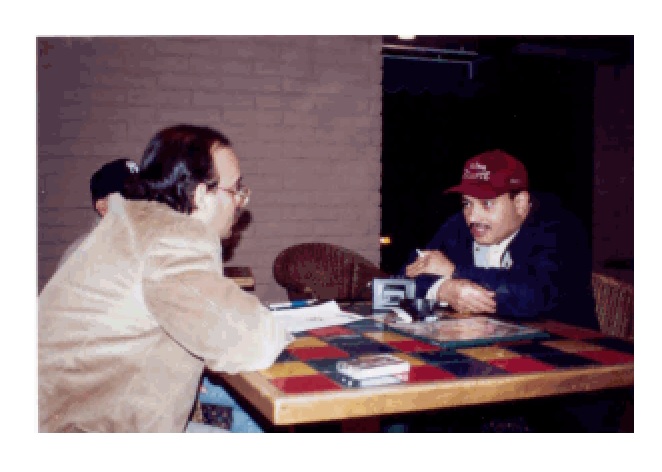
(c) 2000,2001
Herencia Latina - All Rights Reserved.![]()